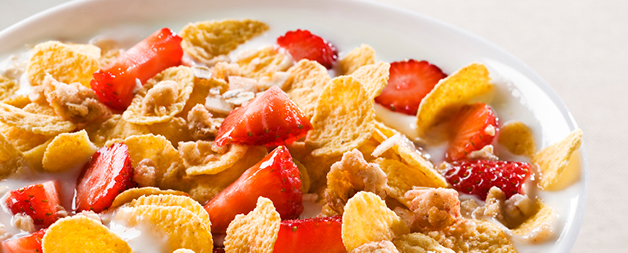
Hidden Sugar
Most of us know that we should reduce our sugar intake. So we cut out the soft drink, the lollies and the white stuff in our morning coffee. However, all our good work maybe being undone with sugar that is snuck into, often apparently, healthy foods.
We aren’t saying the occasional treat isn’t allowed. However, if you have already consumed 20 tablespoons of hidden sugar, combining it with that small treat is going to be seriously sabotaging your diet or weight loss goals.
To make it clear, we are talking about added sugars in the form of sucrose. Naturally occurring sugars in fruits, vegetables and milk, are ok since they come with essential nutrients. We know foods such as soft drinks are obviously high in sugar, however here are a few you may not have realised and a few alternatives that you could try:
Breakfast cereal
Most people know that some are just plain terrible, however even the ones marketed to be healthy may not be as healthy as we are led to believe. Nutri-Grain (36g of sugar per 100g of cereal), Special K (14.5g of sugar per 100g of cereal), Carmen’s Bircher muesli (15.9g of sugar per 100g of cereal)
Alternative: Plain rolled oats (less than 1g of sugar per 100g) are a great low-cost breakfast, you can add sweetness with fresh fruit, alternatively, eggs are a great way to start your day and get some extra protein in your diet.
‘Health’ bars
You may think ‘health’ and granola bars are a good choice for breakfast or snacking during the day, sadly, think again. Most of these bars are loaded with sugar. They may contain healthy fibre, nuts and raisins, but they also contain many different types of sugar. The low-fat health bars are the worst offenders, with some of them containing up to three teaspoons of sugar per 30g bar. Would you add three teaspoons of sugar to an apple?
Alternative: Fruit, a handful of nuts and raisins.
Canned soup
Most canned soups have added sugar to extend their shelf life - some brands can contain several teaspoons of sugar per serving. Again, would you add five teaspoons of sugar to a homemade soup?
Alternative: Read the labels of canned soups (aim for less than 4g of sugar per 100g) or better yet, cook your own soup at home.
Always read the labels
When looking for hidden sugars always read the label. Look for products with less than 4g per 100g of sugar. Unfortunately, this doesn’t distinguish between natural and added sugars. On the label, ingredients are listed from most to least. Sugars may be listed as white sugar, brown sugar, raw sugar, icing sugar, corn syrup, castor sugar, treacle, golden syrup, chocolate, honey, glucose, molasses, sucrose, fructose, lactose and maltose.






Comments